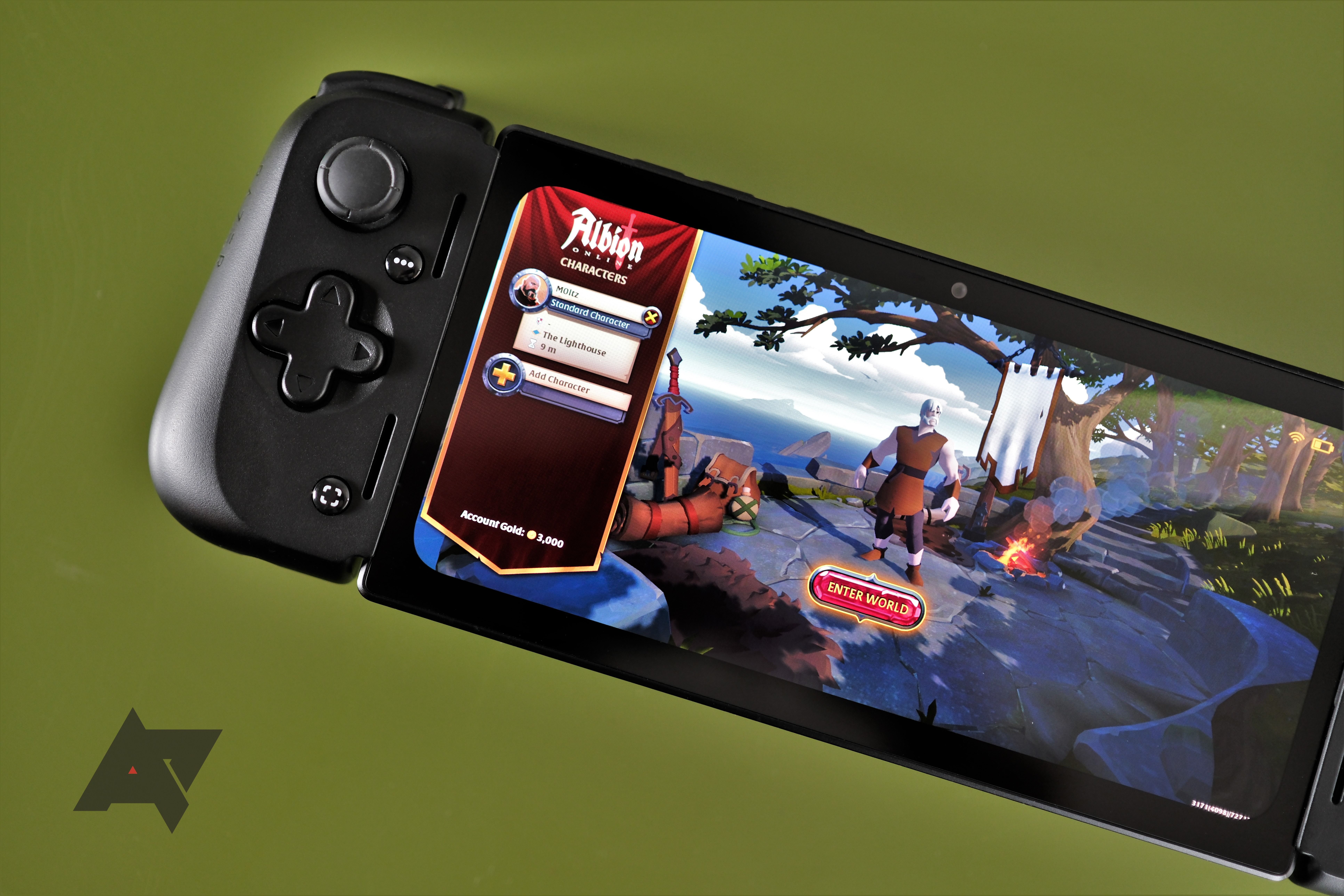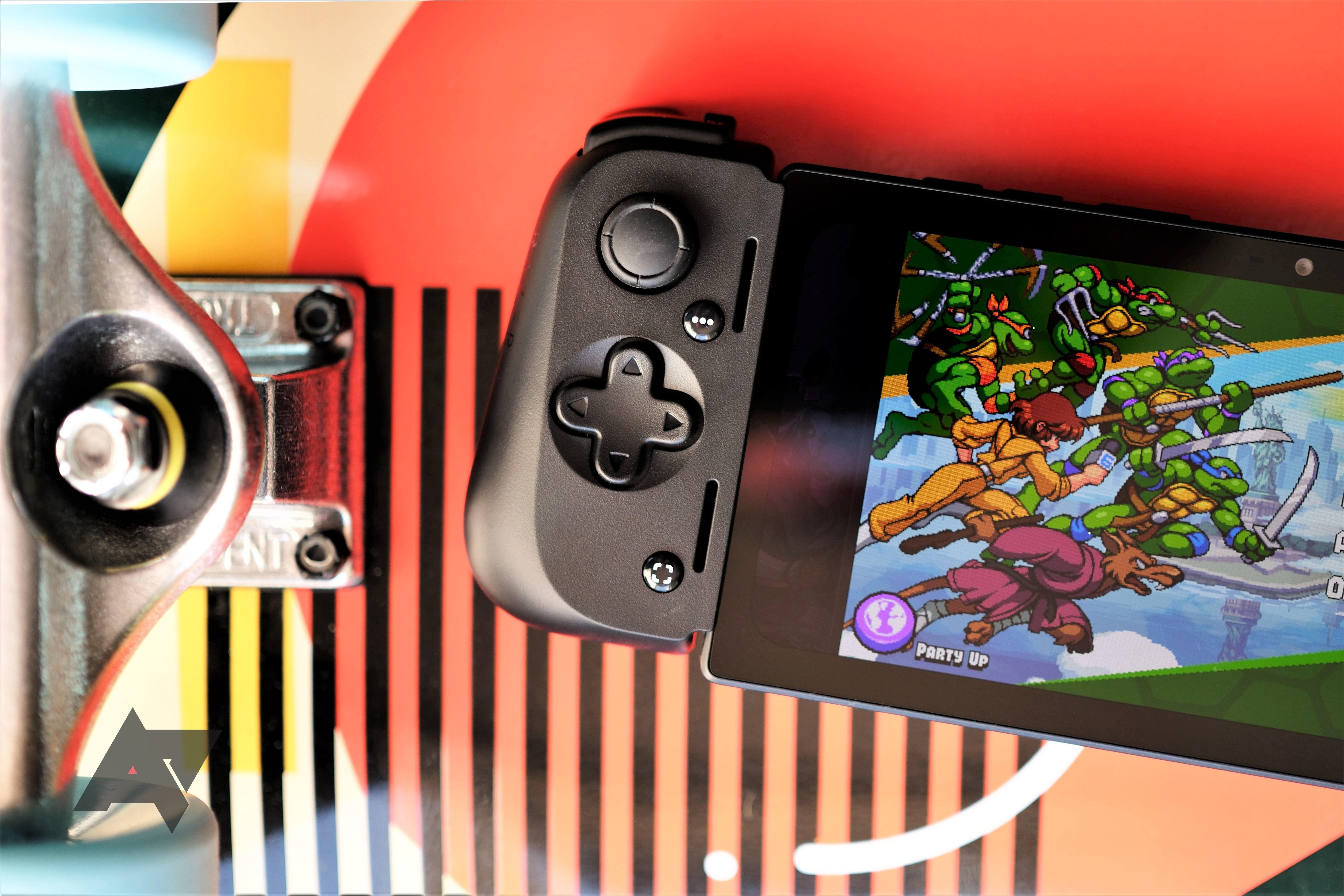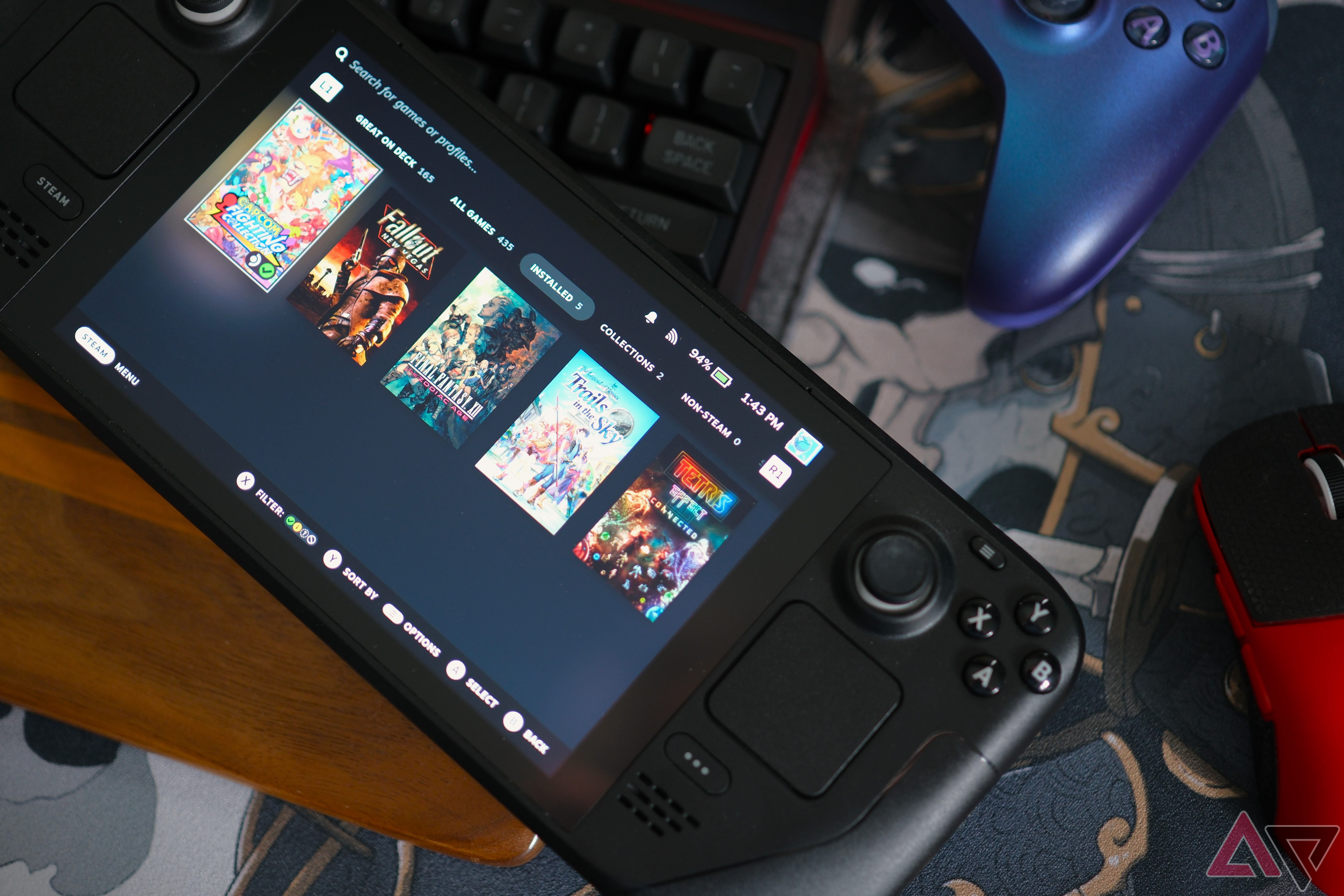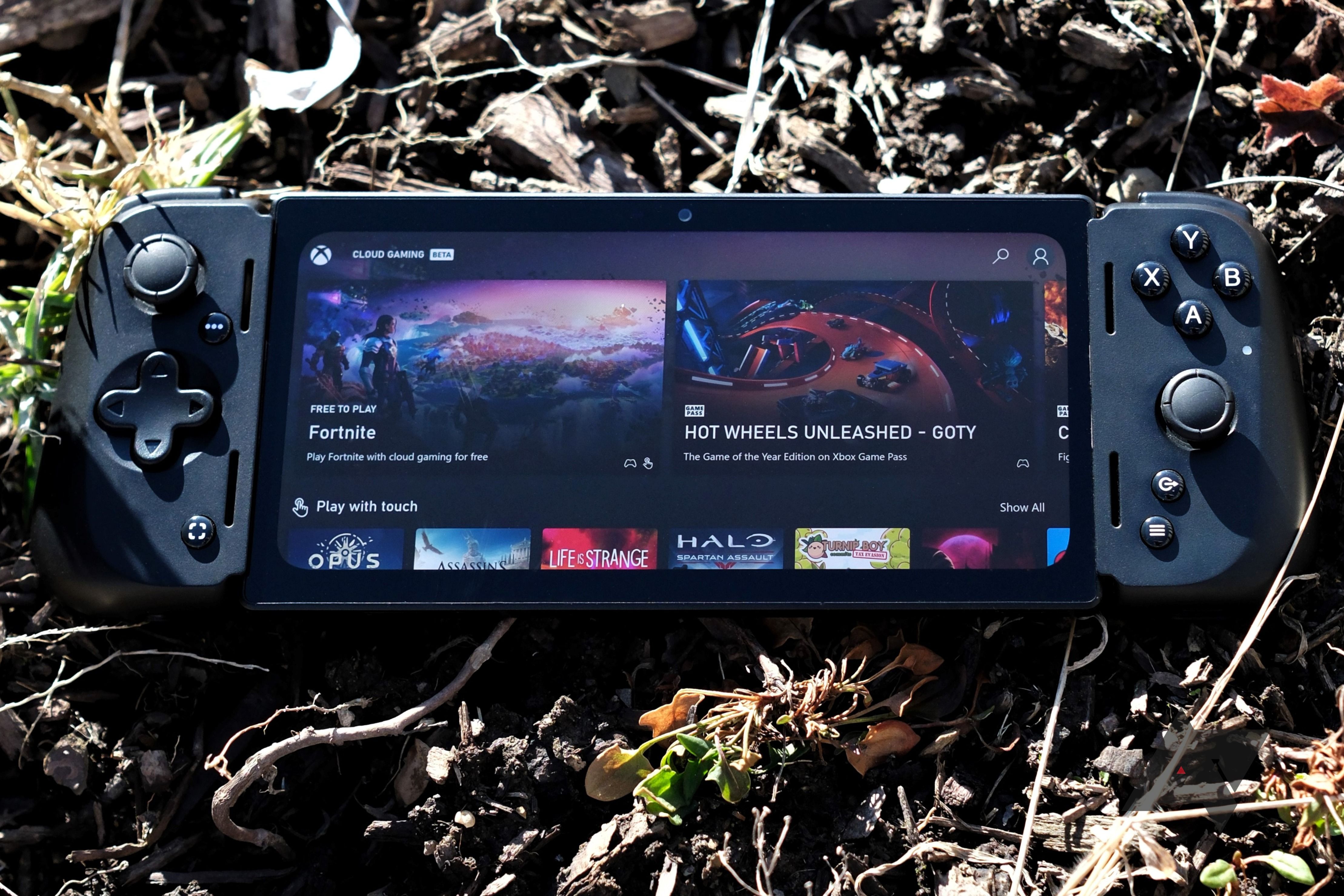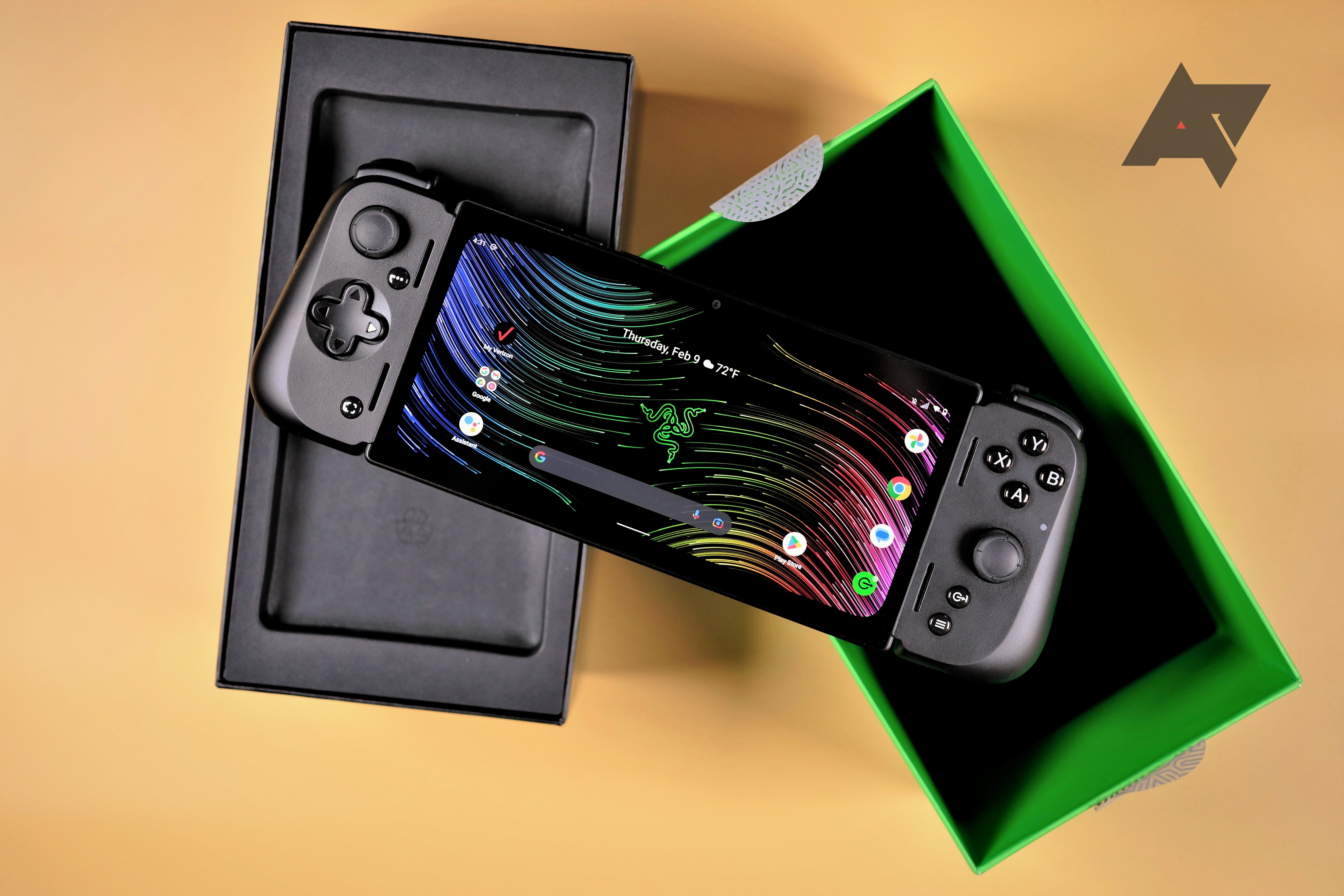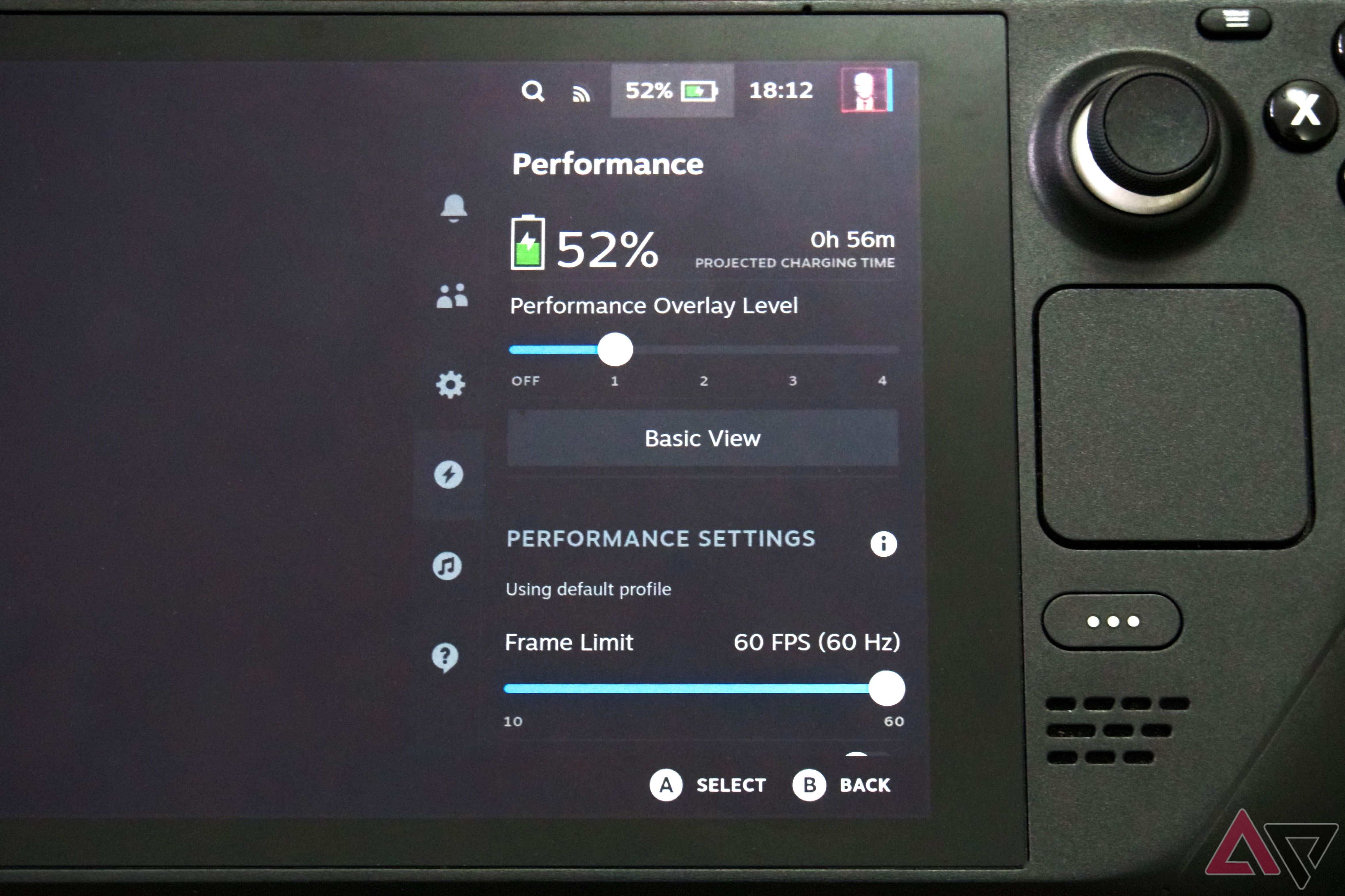-
Steam Deck
Phenomenal cosmic powerThe Steam Deck isn’t the most powerful handheld PC, it wasn’t even the first one. But it is the product that made them affordable and marked a big change in the market. The Steam Deck brings a PC gaming experience to the palm of your hand.
Pros- Better value
- Touchpads for mouse input
- Huge library of games
Cons- Poor battery life
- Gets hot
- Heavy
-
Razer Edge
A worse version of your phoneThe Razer Edge is an Android tablet with a removable controller that excels at streaming games from services like Game Pass or playing native Android games. For the same price as the Steam Deck, it’ll need a secret weapon to make it worthwhile.
Pros- Easier to carry
- Better battery life
- Easier to stream games
Cons- Network-dependant performance
- Limited game library
- Outclassed by your phone
Mobile gaming is more popular now than ever, and handheld consoles are seeing a resurgence. The launch of the Steam Deck played a significant role here, bringing powerful hardware and a massive gaming library to the masses at an affordable price. However, there are many handheld types, as illustrated by the Razer Edge. It’s an Android tablet with attachable controllers that can play Android games through the Play Store and stream games from services like Game Pass. Can a streaming device hold up against handheld firepower?
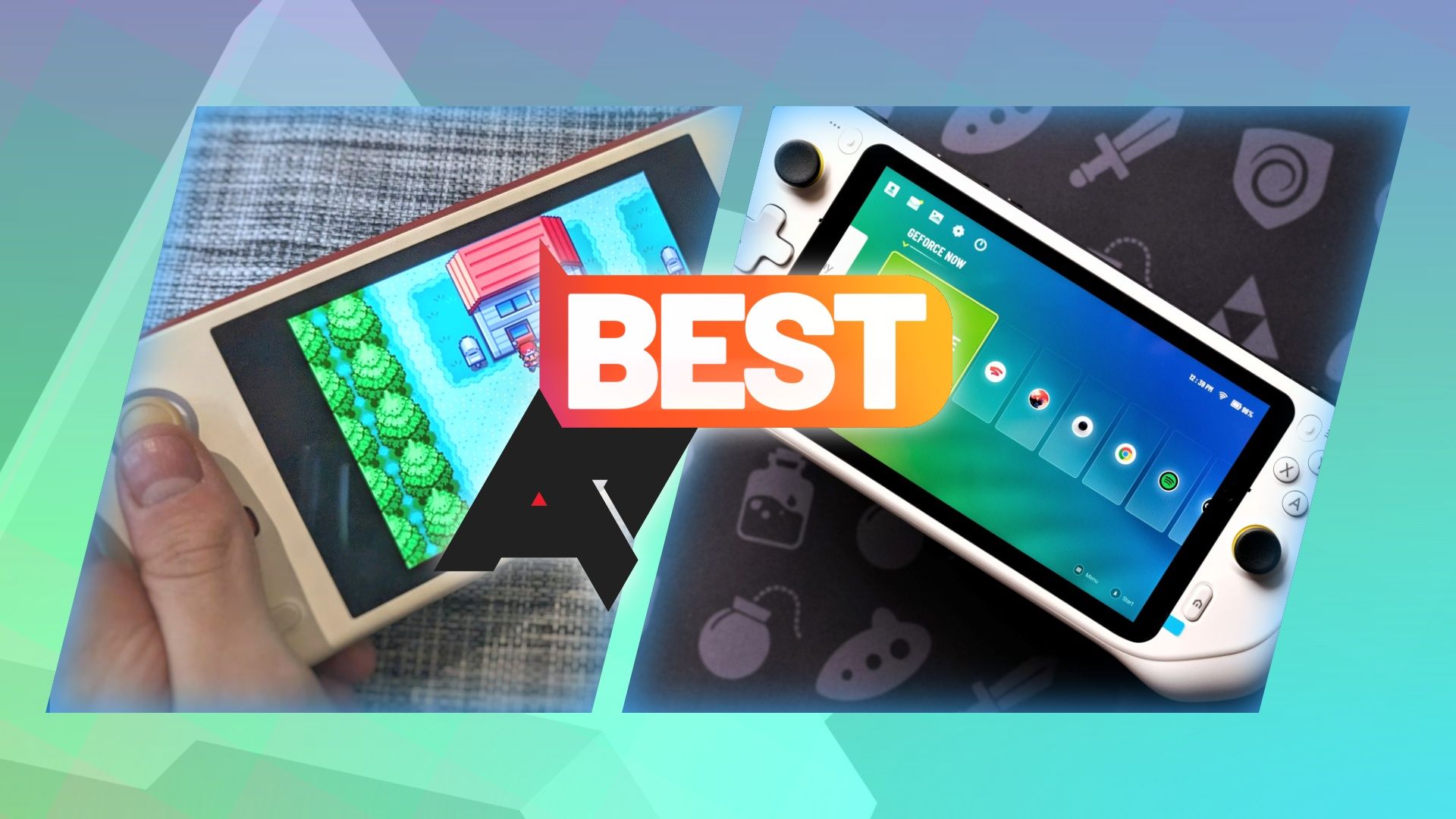
Best Android handheld consoles in 2024
From retro handhelds to streaming powerhouses, there’s an Android handheld for every situation
Price, availability, and specs
The Steam Deck starts at $399 for the 256GB LCD model from Valve. You can save some money on higher storage for the time being by looking at the now deprecated 64GB and 512GB LCD models, which are $350 and $450, respectively. However, once the current stock is gone, they’ll be gone forever. These two variants were replaced with the OLED Steam Deck, which has a larger battery, tweaked internals, and a 90Hz HDR display. For this comparison, we’ll be looking at the base 256GB Steam Deck, as it’s the same price as the Razer Edge. We’re also talking about the current Razer Edge, not the abomination from 2013.
The Razer Edge is also $400, but a more expensive 5G model is available for $600 and can be bought from Razer, most retailers, and some carriers in the case of the 5G model.
-
Steam Deck Razer Edge Dimensions 298mm x 117mm x 49mm 260mm x 85mm x 11mm Playing Time 2-8 hours Up to 5 hours Brand Valve Razer Weight 669g 401g Chipset Custom 7nm AMD APU Snapdragon G3x Gen 1 RAM 16GB 6GB Storage 256Gb, 512GB, 1TB 128GB Wireless Connectivity Bluetooth 5.0, Wi-Fi 5 Wi-Fi 6E, Bluetooth 5.2, optional 5G Headset Compatibility 3.5mm jack, Bluetooth 3.5mm jack, Bluetooth Display 7-inch 1280×800 LCD, 60Hz 6.8-inch 2400×1080 AMOLED, 144Hz Output resolution 4K@120Hz, 8K@60Hz N/A Graphics AMD RDNA 2 Snapdragon G3x Gen 1 Ports Headphone jack, USB-C, MicroSD USB-C, headphone jack, MicroSD Battery 5,200mAh 5,000mAh
Design and display
Differences are more than skin deep
The Steam Deck is a chunky handheld with pros and cons. The pros mean good performance, which we’ll discuss later, but the cons are obvious. At 670g, it’s 268g heavier than the Razer Edge. The display uses a 16:10 aspect ratio, which is fine for some games but can mean letterboxing on other titles. The display is a lower resolution at 1280×800, but given how demanding the games in the Steam Library can be, that’s a smart move.
Flanking each side of the display are clickable trackpads, joysticks, a D-Pad, a share button, and a Steam key on the left, and your ABXY buttons, a pause button, and a menu key are on the right. You’ll find a MicroSD slot on the bottom, while the top is home to the power key, volume buttons, USB-C port, shoulder buttons and triggers, and a cooling vent. The back is where things get more interesting, with the additional cooling vent sharing space with four extra buttons, two on each side, that can be remapped on a per-game basis. The input options on the Steam Deck are one of its greatest strengths, especially with the dual trackpads making games like the Sims 4 or Star Wars: Empire At War more playable.
Despite its weight, the Steam Deck is comfortable to hold, although it can get warm to the touch around the back when under heavy load.
The Razer Edge is an entirely different beast. It’s significantly lighter than the Steam Deck, making it easier to carry around or hold for extended play sessions. The display is a weird combination of pros and cons. On the plus side, it’s a 144Hz 1080P OLED, so the graphics are sharp, and the experience is smooth and colorful. The issue is the shape of the display. At 20:9, every game streaming service that isn’t Geforce Now will show black bars, and the rounded corners can cut off text and other UI elements.
The screen is flanked by a joystick, a D-pad, and two function buttons on the left, while the right has the ABXY buttons, another joystick, a status, and two more function buttons. The volume keys and power button are up top, along with the shoulder buttons and triggers, while the bottom houses a USB-C port, headphone jack, and a tray for the MicroSD card and SIM card if you have the 5G model. One point of interest is that while it doesn’t have extra keys on the back, it has more shoulder buttons — two on each side, plus the triggers.
Software and performance
Do you want to stream or game locally?
The Seam Deck is running SteamOS 3, which is based on Arch. That means it’ll boot up with a touch/controller-friendly Steam UI, but you can switch to the KDE Plasma desktop environment if you want to. This is especially useful if you hook up a keyboard and mouse, as it gives you full access to the file system, so you can install mods for your games just as you would on a PC.
The software is excellent, but there are a few teething issues. Since it is Linux-based, most games have to run through Proton. That’s fine 99% of the time, but you occasionally find some games that aren’t compatible, although they’re often updated eventually.
Performance on the Steam Deck is good overall, but it will start to struggle with newer demanding games. Even so, there’s a lot you can do with this hardware. Horizon: Forbidden West is playable, maintaining around 25-30fps in most areas, which is hardly ideal but not too bad if you want to advance the story while out and about. Cyberpunk 2077, one of the most demanding games out there, is also playable with the right settings, as are other console classics like Marvel’s Spider-Mand and Miles Morales. Where the Steam Deck really shines is games like Subnautica, which maintains a steady 45-50fps.
You can run streaming services like Game Pass through the browser on the Steam Deck, but setting it up can be annoying, and it clearly isn’t what the console was designed for.
The Razer Edge runs Android 12 with a controller-friendly launcher running the show, although you can install Nova or any other custom launcher. It’s a shame it hasn’t gotten an Android 13 or 14 update, but realistically, it won’t make much of a difference for gaming.
Performance is a more nuanced topic for the Razer Edge. Native Android games run pretty good, though games like Genshin Impact can cause it to struggle. Moving on from native Android games, Game Pass and other streaming services run pretty well through their native Android apps. This is what the Razer Edge is intended for, but it suffers from the usual input lag streaming is known for (you can’t beat the laws of physics), and all performance is dependent on signal strength, while the Steam Deck will perform the same no matter where you go. The Razer does have an advantage if you get the 5G model, letting you access online services wherever you go, but that’s an extra $200. For $50 more than that, you can get a 1TB OLED Steam Deck and tether it to your phone.
Battery life
A power bank is a necessity for postable gaming
The Steam Deck’s battery life isn’t great. AAA games like Forbidden West will quickly drain it to 0% in under two hours, while lighter games like Stardew Valley will have you reach the claimed 8 hours. Thankfully, charging is fast at 65W, although the included charger is only 45W. You’ll be carrying around a power bank if you want to do some serious on-the-go gaming, but seeing as the Steam Deck itself is large enough to necessitate a backpack, you’ll probably have room for one anyway.
The Razer Edge pulls the win here. Android is a mobile OS designed for portable devices running off of a battery, and mobile games are nowhere near as power-hungry as the full-fat desktop experience the Steam Deck is trying to offer. Standby is a bit of an issue, though. Leaving the Kishi V2 Pro controller detected results in a high standby battery drain, killing the 5,000mAh battery in the tablet in less than a day. You can negate this by removing the controller, but you shouldn’t have to do so to get a good experience.
Which is right for you?
Depending on your needs, one will stand above the other
The Steam Deck is an easy recommendation. Both handhelds are the same price, but the Steam Deck gives you double the storage, more input methods, full AAA games, a Linux desktop environment that allows you to install mods, and the ability to connect to an external display. With some setup, you can even stream games to it, removing the only party trick the Razer Edge has.
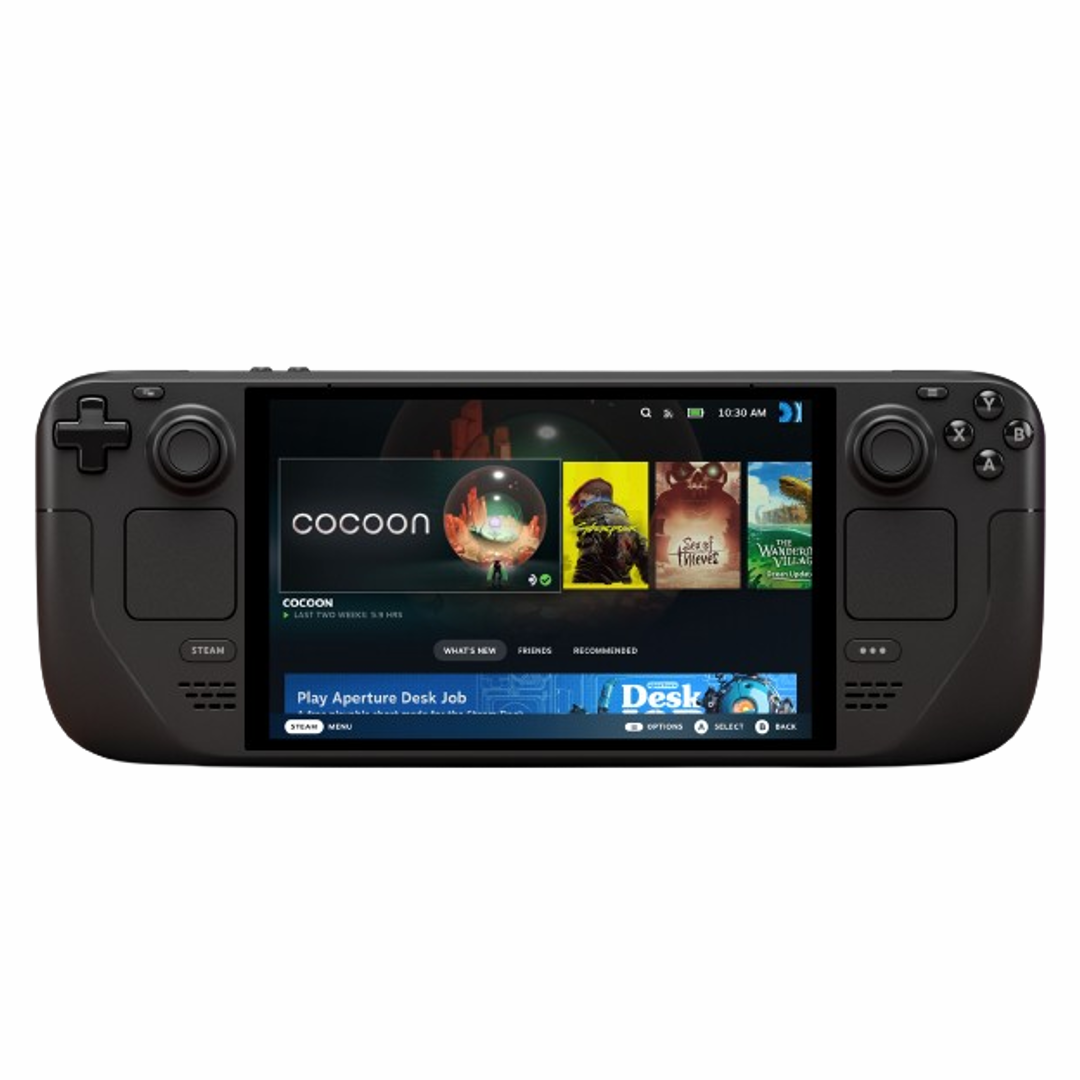
Steam Deck
Great handheld at a great price
The Steam Deck offers unrivaled value for $400. The Steam library is vast, and this hardware is able to play even demanding games at manageable framerates. The Steam Deck put the rest of the industry on notice when it came out, and there’s a lot to love about it.
If you don’t care about PC games and want something with a controller focused on Android games and streaming services, you should buy the Razer Edge. Then again, it’s possible you already own a phone that’s just as powerful, which means you can pick up the Kishi V2 Pro controller to recreate a similar experience for much less.
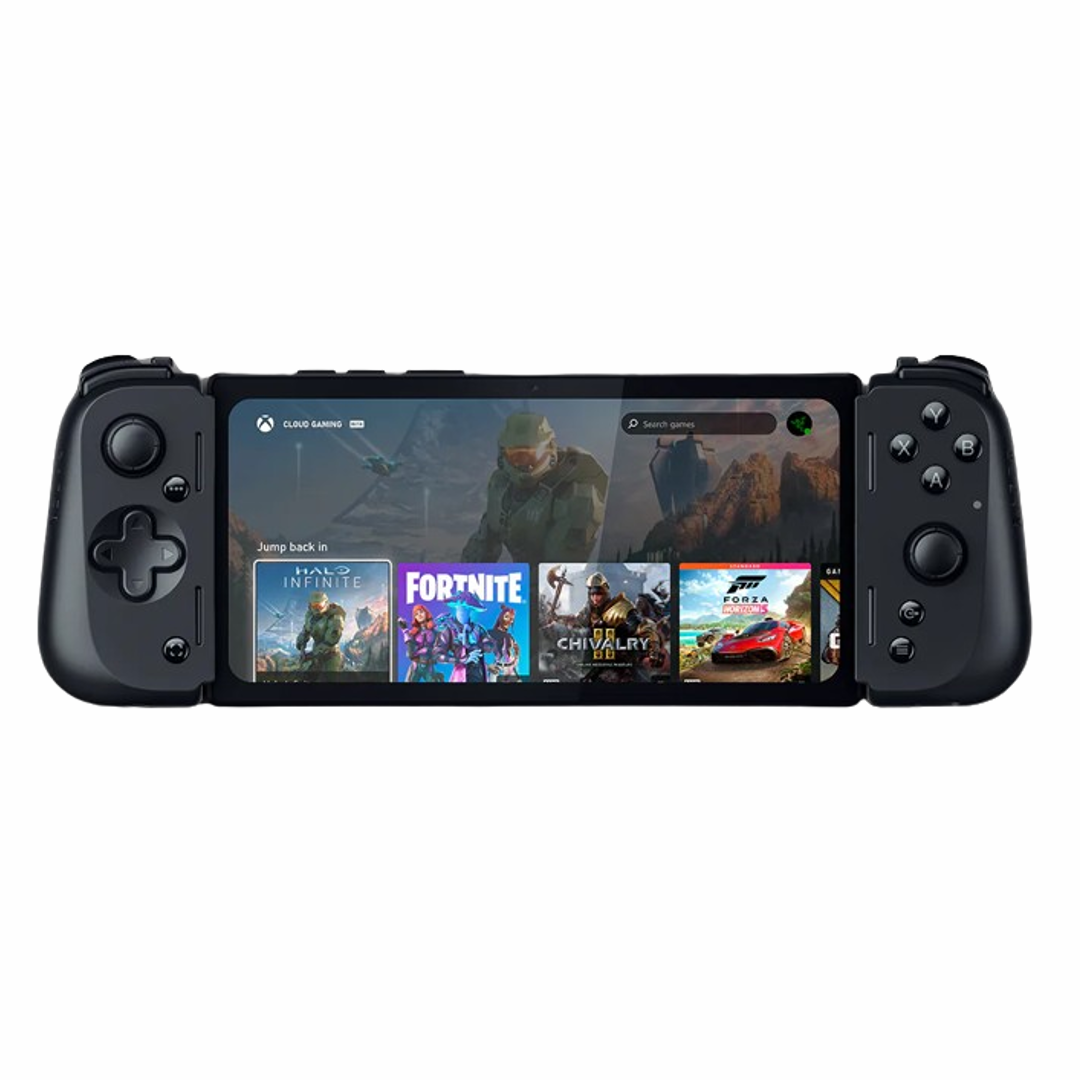
Razer Edge
Great choice, but doesn’t deliver on value
The Razer Edge easily runs any Android game and excels at streaming. The issue is the price, which doesn’t compare to the value of the Steam Deck or the phone you already own.




